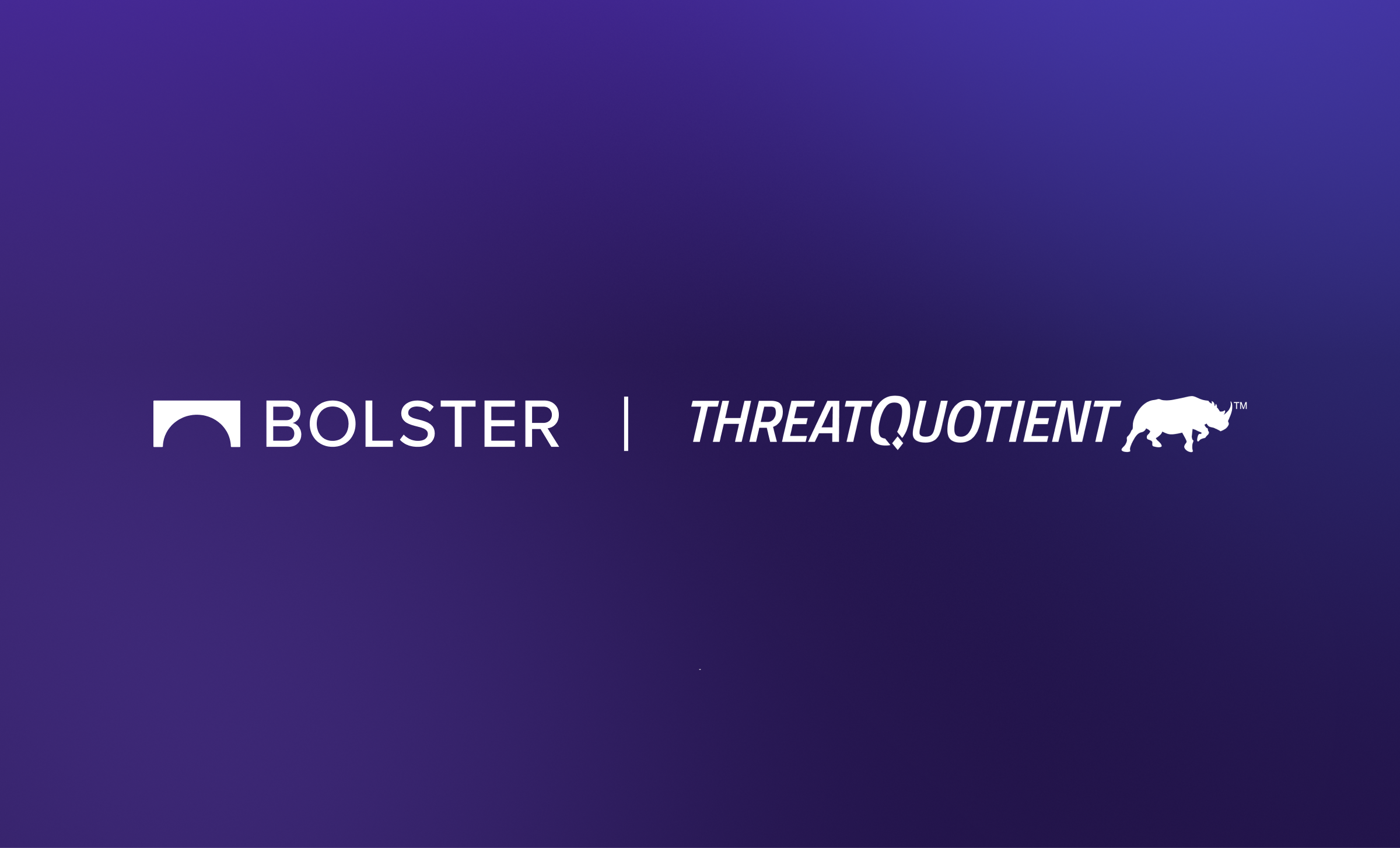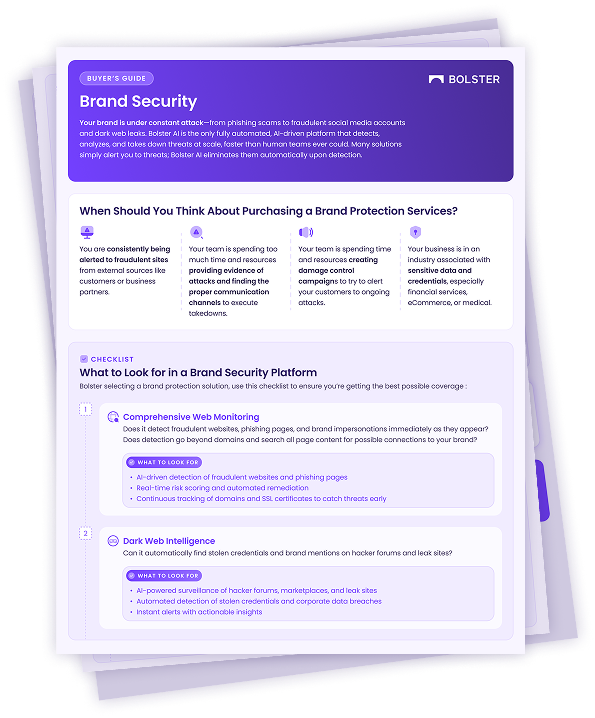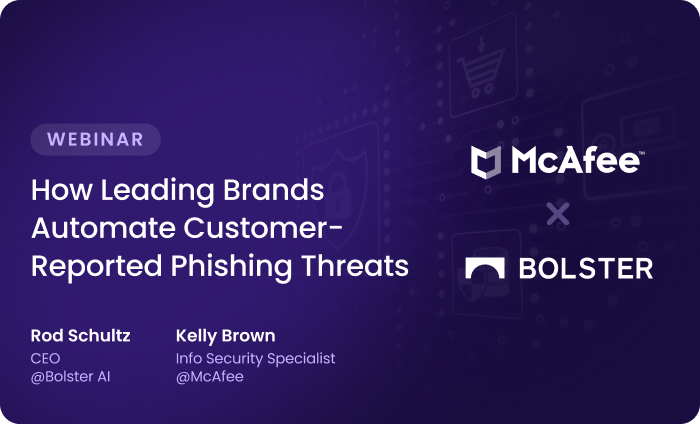At Bolster, we’ve long said that threat intelligence doesn’t stop at the firewall.
You can’t protect what you can’t see, and most threats don’t start in your systems. They start out there, in the wild. On fake domains. On scammy social profiles. In sketchy app stores. On the dark web. And if your security team isn’t seeing those signals, they’re responding with one hand tied behind their back.
That’s why we’re excited to share a new integration between Bolster and ThreatQuotient, now part of Securonix. It brings Bolster’s real-time, high-fidelity digital risk intelligence directly into ThreatQ.
So what? Here’s why this is a big deal.
Fraud and security are the same problem now
Phishing isn’t just about stolen credentials. Deepfakes aren’t just about manipulated videos. Brand impersonation isn’t just a marketing issue.
All of these are attack vectors.
They’re how bad actors kick off social engineering campaigns. How they get users to click, enter credentials, wire funds, or approve actions that put your business at risk. And the scary part? They’re getting better at it. Faster. Cheaper. More convincing.
Fraud, disinformation, and deception are no longer peripheral… they’re core to how cyberattacks start. Which means security teams need visibility into those signals.
What we built
This new integration lets you pull Bolster’s external threat intel—phishing domains, fake social accounts, scam apps, leaked credentials, directly into ThreatQ. From there, it can be correlated, analyzed, prioritized, and fed into your SIEM (Securonix or otherwise), your SOAR workflows, and your analyst investigations.
It’s clean. It’s structured. It’s real-time. And it’s actually usable and not just another raw feed for someone to sort through.
The result? Better context. Faster decisions. Fewer misses.
We’re not the only ones saying this
This isn’t just our point of view – it’s one the industry is waking up to. According to recent Gartner research:
“Disinformation security products risk failure if isolated from cybersecurity’s ecosystem as attacks are scaled by AI.”
—Gartner, Disinformation Security Market Insight: Align With the Cybersecurity Ecosystem to Succeed, May 2025
Gartner’s message is clear: if your external threat detection can’t connect into the tools your SOC already uses, it won’t get used. The signal will get lost. And the threat will get through.
This is our answer to that.
Built by request, from the people who live this
This integration didn’t happen in a vacuum. It was built in partnership with real customers – massive, global brands like Uber – who needed a better way to plug Bolster’s intelligence into their existing security stack.
These are companies that deal with impersonation and fraud at scale. And they’ve made it clear: security can’t be reactive anymore. You need signals early. You need them to flow into the system. And you need a way to act before damage is done.
Let’s connect the dots
You’ve already invested in ThreatQ and Bolster. You already have processes for investigating alerts, running down IOCs, and remediating attacks.
This integration just brings you more context so you can do all of that faster, smarter, and with more confidence.
- See the phishing site before the phishing email.
- Catch the fake mobile app before the helpdesk tickets roll in.
- Know that a credential leak is connected to a specific adversary and campaign—automatically.
This is what it looks like to move from reactive detection to proactive defense.
Ready to light up?
If you’re already using ThreatQ and want to activate the Bolster integration, reach out to your customer success team or contact us here.
And if you’re still stuck piecing together phishing alerts by hand—let’s talk.
Attribution and Disclaimer:
Gartner, Disinformation Security Market Insight: Align With the Cybersecurity Ecosystem to Succeed, May 2025.
Gartner does not endorse any vendor, product or service depicted in its research publications, and does not advise technology users to select only those vendors with the highest ratings or other designation. Gartner research publications consist of the opinions of Gartner’s research organization and should not be construed as statements of fact. Gartner disclaims all warranties, expressed or implied, with respect to this research, including any warranties of merchantability or fitness for a particular purpose.





